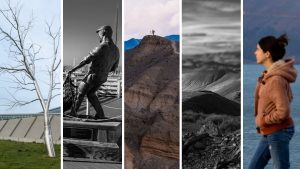
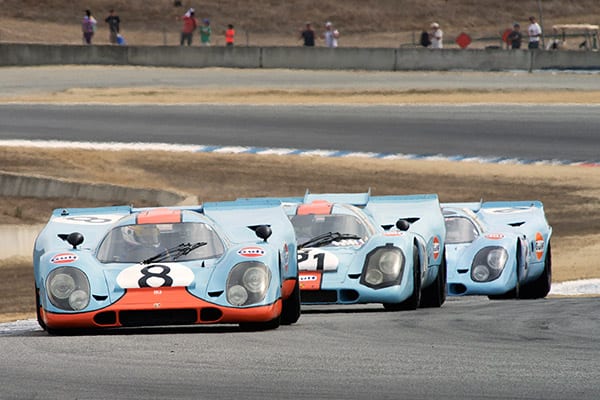
Tip: You’ve got to know where the action is going to happen, says pro race photographer Dennis Gray.
Dennis Gray was introduced to photography right about the same time his father started sneaking him into the Stockton sport races in the trunk of his car—he was 14. “I got a Nikon F, one of the first ones they made in 1959, and at the same time, my father bought a go-kart that he and I raced. We were both gear heads,” recalled Dennis. “He snuck me into the races so he didn’t have to pay the $2 entry fee.”
In high school, Dennis got the Millbrae Sun to give him press passes for Laguna Seca so he could go down and photograph the races. Fast-forward a bunch of years, and Dennis had a thriving photography business going in San Francisco and then LA, where he was shooting cars, airplanes, and motorcycles for Volvo, Cadillac, Kenworth, Peterbilt, Beechcraft, and Pirelli tires.
“There’s a photograph of a Lamborghini Countach on yellow cobblestones and another one of a blue turbo Porsche. They both won a lot of awards and really changed the way Pirelli approached advertising,” he said.
Dennis will be teaching a workshop with The Image Flow this spring at Sonoma Raceway photographing vintage car racing, where participants will get press credentials—the same access working media professionals get—as well as the opportunity to meet and talk to the owners and drivers.
Here, Dennis shares some of his secrets learned over a lifetime of photographing all sorts of race cars in all situations.
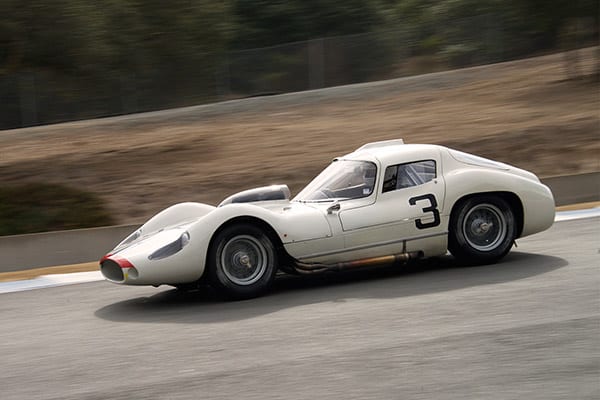
Dennis said photographing race cars is like anything else: You’ve got to find an environment where the light will show off the shape and color of the car. The primary challenge of shooting vintage car racing is that the cars are most often on the track between 11AM–2PM.
“You’ve got to find the places around the track where the light will give you good shots at noon, which isn’t so easy,” said Dennis.
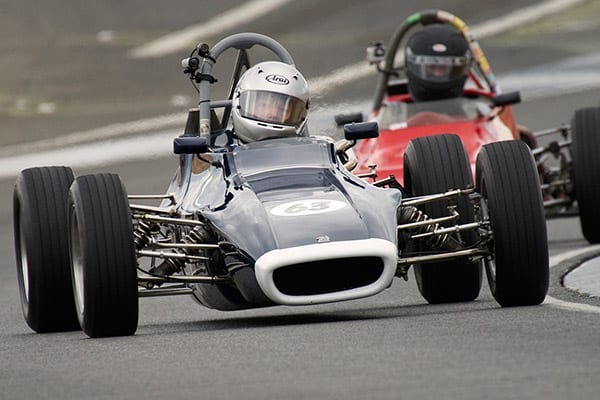
Dennis doesn’t have a favorite race track per se, but he does have a number of favorite turns: Outside turns #2, #, and #4 at Sonoma, the under the bridge turn #12 at the Circuit Mont-Tremblant in Canada, and three or four turns each at Laguna Seca and Barber Motorsports Park in Birmingham, AL. “If you can be outside, on location, when the light does something wonderful, and somebody puts a car there when you need it, that’s a great place to be,” he said.
A “good turn” is one where he can put himself and his camera in a relatively safe position and be able to capture something wonderful happening.
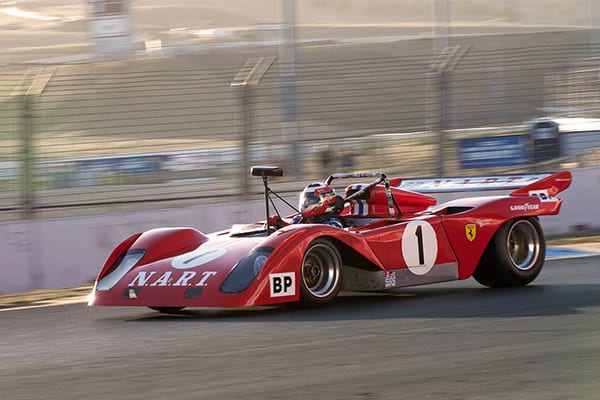
To make the most of the “good turns” you’ve got to know what the cars are going to do around the track. While Formula 1 cars might drift around the turn with the back end further out than the front, other cars might lift an inside tire.
“You need to know how the car goes through a turn, what the driver does with his head and his eyes to get through a turn, and what the light’s doing to the car, so you can work that into your shot,” said Dennis.
Of course, it all changes in the event of fog or rain. “Then all bets are off and you have a totally different way of approaching the track,” he added.
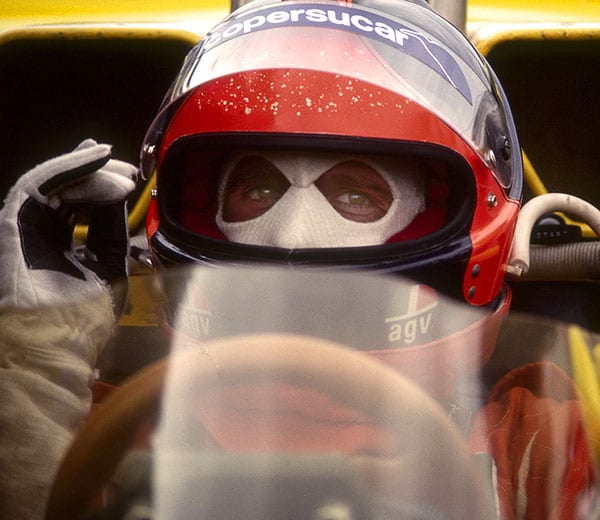
Dennis has been known to walk around the pit and tell the drivers, “If you want to get published, don’t wear sunglasses.” On or off the track, he wants to see their eyes.
“Like everything else, if you look at a picture—a cow, a good-looking guy, a beautiful woman—the first place you look is the eyes. If they’re wearing a Darth Vader-like black visor, who cares. On to the next one,” he said.
In the pit, he uses a long lens, 150-200m, wide open and at a fast shutter speed, focused on the eyes. The closer in you can get, the better the photograph.
“If you can get from the chin to halfway up the helmet, that’s better. If you can get the guy pissed off, that’s better yet. If you get a guy who’s just won and he’s got a great smile on his face or he’s embarrassed because you’re taking his picture—even better,” said Dennis.
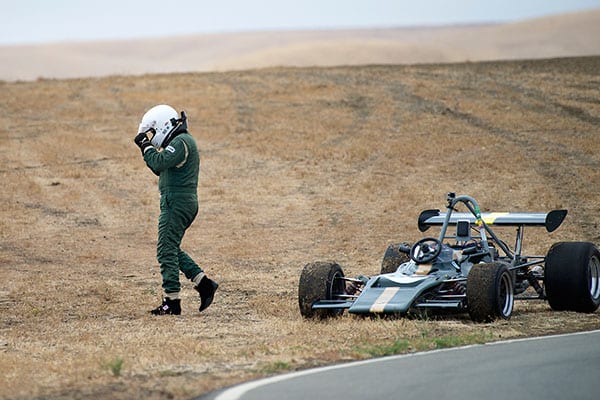
If you push your shutter to take a photograph, and you hear “click, click, click” all around you, find a new spot to shoot; there are too many photographers and everyone is going to get the same image.
“Your shot has got to be unique. Look for a turn that’s going to give you impact in your photographs. What the car is doing, what the driver is doing, what the light is doing to the car. Impact is all important.”
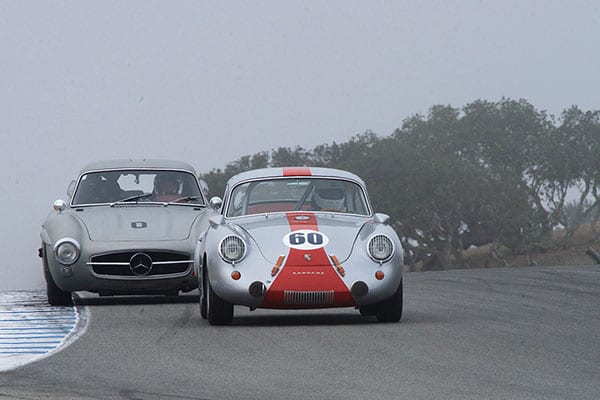
The natural tendency with sports photography is to use the continuous high-speed shooting mode, but Dennis teaches his students to shoot single shots. To develop their eye, their reflexes, and their awareness of what’s going on in the frame.
“When you shoot high speed, you’re letting the camera shoot, and I guarantee it will miss that tire lifting off the ground. It will get it right before and right after; it never gets it right. As a shooter, you’ve got to be fast enough, practiced enough, to squeeze the shutter at just the right moment.”

